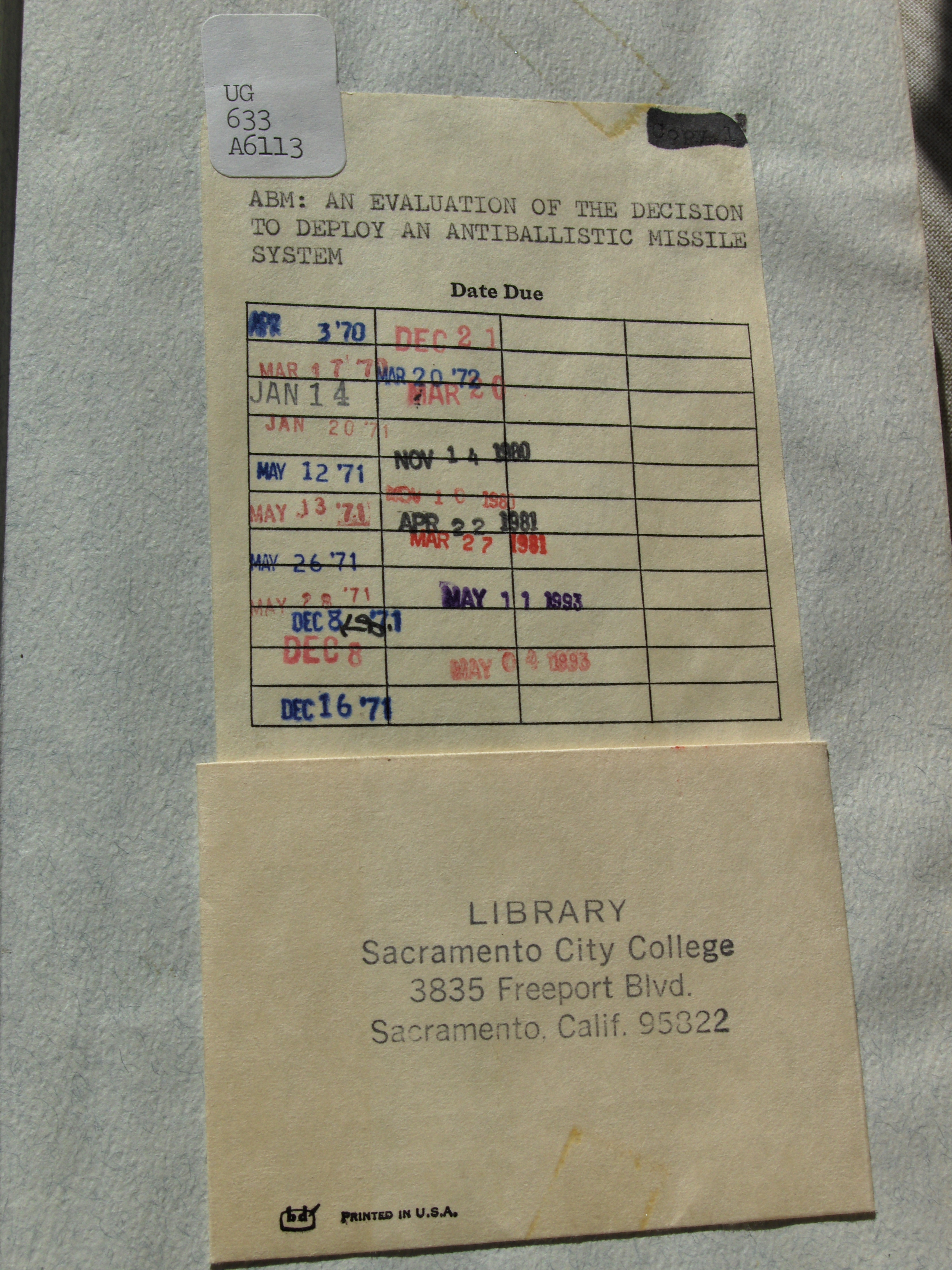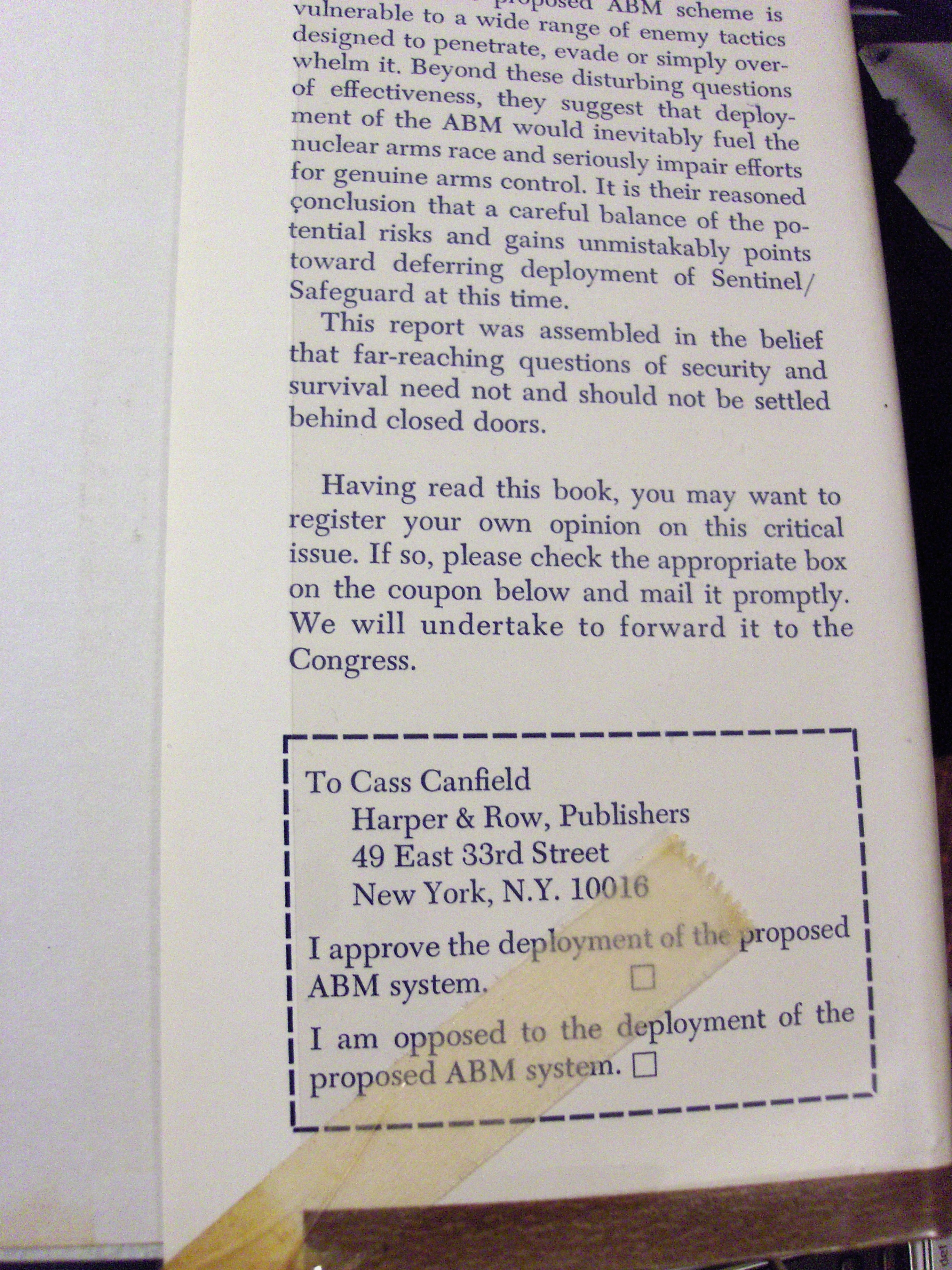In a recent conversation with a graduate student friend of mine who is writing about the domestic politics of US Cold War nuclear strategy, we ended up talking about a book he had just bought second-hand. Although the subject-matter of the book, ABM: An Evaluation of the Decision to Deploy an Anti-Ballistic Missile System, edited by Abram Chayes and Jerome B. Wiesner, with Introduction by Senator Edward M. Kennedy (New York: Harper Row, 1969), is pretty far removed from the kinds of things I usually read about for my own research, we stumbled upon what turned out to be a neat little detail inside the volume, which had previously been owned by a college library in California:
As you can see, the stamps in the borrowing slip indicate that the book was a fairly popular loan item until March 1972. After this, it was not borrowed again for eight years, until 1980. To the uninformed reader this evidence of the book’s borrowing history conveys no particular meaning, but my Cold War expert explained that there is in fact significance in these inked dates. In May 1972 the Anti-Ballistic Missile Treaty was signed between the USA and the Soviet Union. The deployment of an ABM thus became very unlikely, and so interest in books such as this one subsided. In November 1980, however, Ronald Reagan was elected President. He soon began discussions about a renewed arms race, which lead to the announcement in 1983 of a new missile defence plan, dubbed the ‘Star Wars’ initiative. The borrowing slip confirms that interest in this book was revived somewhat during those Reagan years. It tailed off again in the 1990s, and at some subsequent stage the book must have entered the second-hand market after being deaccessioned by the library.
This volume is a serious political document, in which the editors brought together a series of Democrats, all of them either major players in the Kennedy/Johnson administrations, or highly respected scientists, many of whom had also advised the government. Thus the book united technical knowledge about nuclear weapons with political arguments against their deployment, a combination which had not been seen before in such a printed volume. Rushed to press in 1969 by Cass Canfield, a publisher friend of Edward Kennedy, it is furthermore a book which explicitly encourages the individual reader to participate actively in the political debate:
Printed on the inside of the back cover is an invitation for the reader, ‘having read this book’, to make up his or her own mind about the deployment of the ABM system. The coupon may be cut out and sent to Congress via the publisher. Perhaps because this copy was a library book, none of its readers picked up pen and scissors to complete and mail the coupon as directed. There are many other discussions to be had about the significance of this feature of the book. Most importantly however, in the context of the CMT’s activities, this volume reminds us that there is much more to say about both the material and intellectual functions of the book as an artefact around which individuals and institutions interact, especially but not solely in the sphere of political debate.

